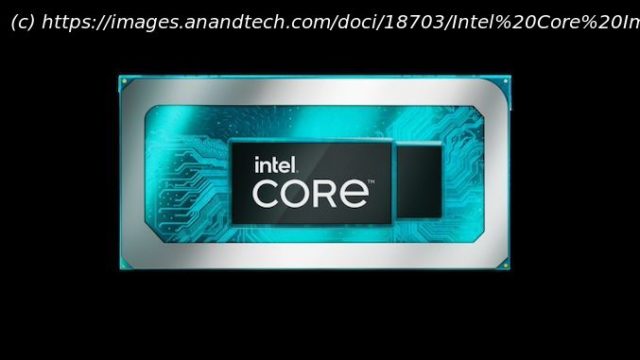Array
Not just focused on their new 13th gen Core desktop chips, Intel this morning is also kicking off 2023 for its mobile customers in a big way with the announcement of the 13th generation Core mobile family. Based on the same Raptor Lake architecture as Intel’s 13th gen Core desktop chips, Intel is launching (or at least, announcing) the full 13th gen mobile stack all in one go. This means everything from the ultra-portable U-series chips up to the desktop replacement-class HX-series. All of them gaining Raptor Lake’s CPU architectural enhancements, along with a smattering of new features that are coming to the overall platform.
Leading the lineup – and first SKUs out the door – are the 13th generation Core HX-series processors for high-performance notebooks. With SKUs featuring up to 24 CPU cores (8P+16E), Intel is looking to deliver desktop-level performance in the mobile space, with turbo clock speeds of up to 5.6 GHz, a turbo TDP of 157 W, and a base TDP of 55 W. Like previous iterations of the HX series, these parts are based on Intel’s desktop silicon (Raptor Lake-S), so they are designed to be placed in DTR-class laptops and are almost always paired with a discrete GPU.
Also being announced today are the enthusiast-level H-series processors, Intel’s more traditional mobile-optimized processors for high performance laptops. These offer fewer cores and slightly lower clockspeeds than the HX processors, but are better suited for mobile operation with a more powerful integrated GPU and support for technologies like LPDDR5 memory. Finally, joining the H-series will be Intel’s thin and light performance-based P-series chips, and their U-series (ultra-thin) chips use in the most portable of laptops, making the usual power/performance tradeoffs to get Raptor Lake in increasingly light laptops.
As was the case with Intel’s Raptor Lake desktop parts, their 13th gen Core mobile parts are largely a drop-in replacement for their previous-generation Alder Lake processors. This means that Intel’s army of OEM partners are going to be hitting the ground running with laptops incorporating the new chips – and CES will be awash in new laptop announcements. All told, Intel has an extensive lineup of SKUs on offer, benefiting from its Intel 7 node and hybrid architecture of performance (P) and efficiency (E) cores. There’s a whole stack of Raptor Lake mobile processors for every price point and requirement, from high-end gaming to portable workstation levels, as well as run-of-the-mill entry-level notebooks for users on a budget.
Finally, Intel has once again updated its Evo program for the latest generation of processors, partnering with several OEMs to certify a select class of notebooks that integrate the latest and greatest of Intel’s mobile technology and best design practices.
The flagship line of Intel’s new 13th Gen Core mobile processors are the nine new HX-series mobile parts. Intel hasn’t only outlined its intent to equip OEMs with high-performance chips based on its desktop silicon, but they have just launched the first 24-core laptop-level processors, the Core i9-13980HX, the Core i9-13950HX, and the Core i9-13900HX to the market. Intel’s Core i9-13980HX is also the fastest mobile processor with a turbo clock speed of 5.6 GHz, which for a notebook is impressive.
The key features of Intel’s 13th Gen Core HX platform for mobile include up to 24 CPU cores, split up into 8 Performance and 16 Efficiency cores, which is the same core count as the flagship desktop Core i9-13900K. Also present is support for DDR5-5600 and DDR4-3200 memory (but no LPDDR5), along with up to 128 GB across four memory slots in a 2DPC configuration. One fascinating element of the HX-series is that it supports PCIe 5.0 x16, which can be split into 2×8, Intel doesn’t state if this will be limited to just graphics or if notebook OEMs can integrate PCIe 5.0 x4 M.2 slots into the mix.
As this is based on Intel’s desktop silicon and PCH, what you won’t find here is integrated Thunderbolt 4 support. Instead, OEMs will need to add that via discrete TB4 controllers, and there’s scope to include up to two such controllers here. Otherwise, the platform offers up to eight SATA ports, ten USB 3 ports, and up to fourteen USB 2 port (although no notebook OEM or design uses anywhere close to this). Intel includes dynamic overclocking support, XMP 3.0 memory profiling, and other Raptor Lake-S SKUs from the desktop side benefits from Intel Tread Director when used with the latest Windows 11 22H2 update.
Looking at the Intel 13th Gen Core HX-series stack, the top processor in the series is the Core i9-13980HX, which has 24-cores (8P+16E) with a P-core turbo of 5.
Домой
United States
USA — IT Intel Unveils 13th Gen Core Mobile Processors: Raptor Lake-HX, H, P, and...






